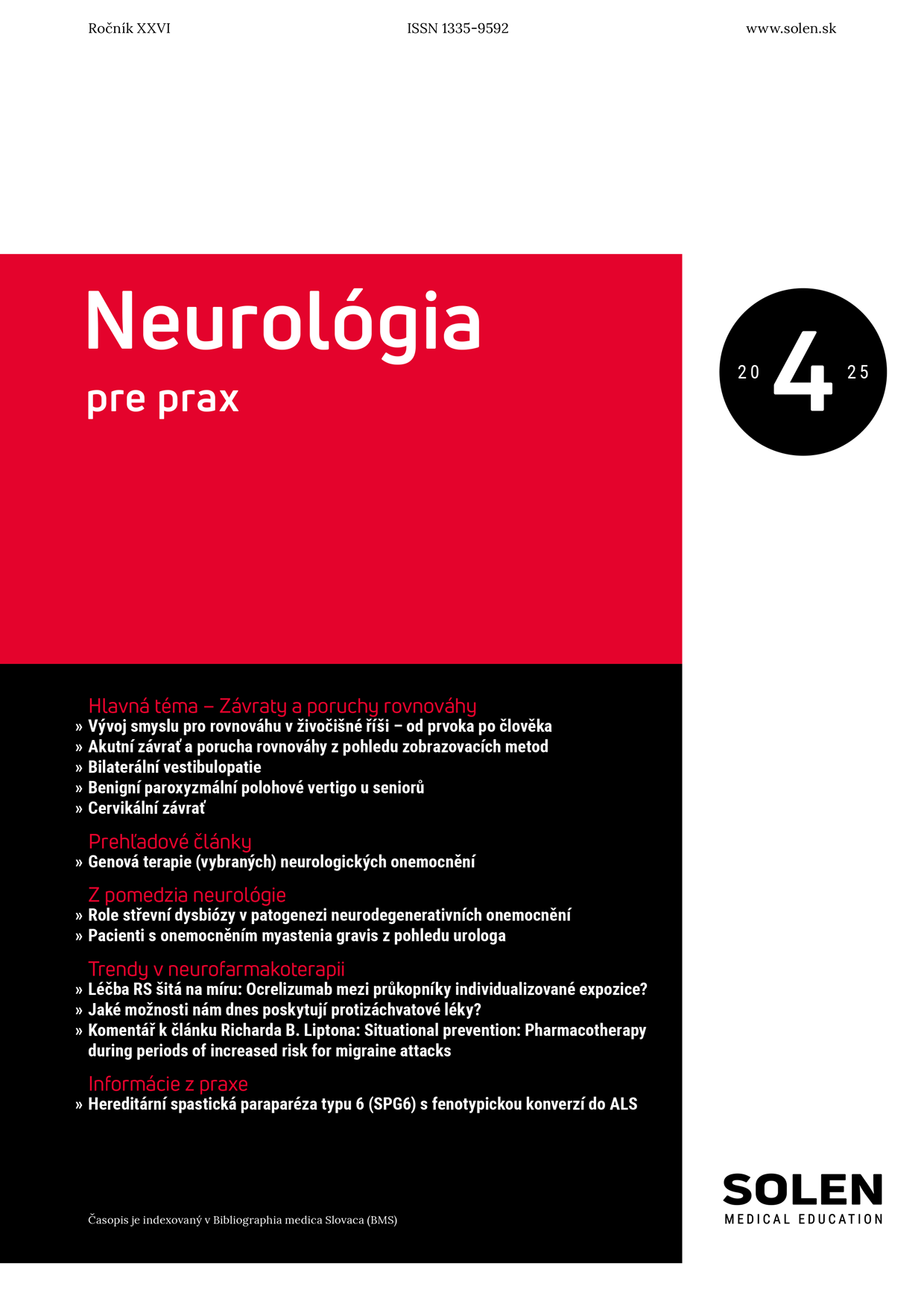Pediatria pre prax 2/2015
Vertigo in children
Vertigo is one of the most common subjective symptoms and one of the most frequent reasons of visiting a physician. In comparison with adults, its incidence is lower in children (8 – 14 % versus 20 – 42 %), but, on the other hand, often represents a bigger diagnostic problem for the physicians. The basis of the management of vertigo is a good taken personal history. The first step should be differenciation of true from false vestibular vertigo (disequilibrium, lightheadness, oscillopsia). Other important information are the duration and triggers of attacks of vertigo, presence of auditory and other symptoms. During the physical examination we must focus in the vestibular system. Is necessary to examine not only tonic deviations with the Unterberger and Hautant test, but also the head-impulse test and the Dix-Hallpike test, which have a very high sensitivity for peripheral vestibular syndrome and benigne paroxysmal positional vertigo respectively. Patients with peripheral vestibular syndrome must have ORL examination including audiometry and tympanometry. Neuroimaging is indicated in the case of central vestibular syndrome and in unclear cases. Detailed vestibular examination and ENG are helpful in a better characterization of vertigo. The therapy of acute vertigo consists in administration of antiemetic and antivertigineous drugs. Support therapy and bed rest are also necessary.
Keywords: vertigo, dizziness, vestibular syndrome, migraine, differential diagnosis.

















